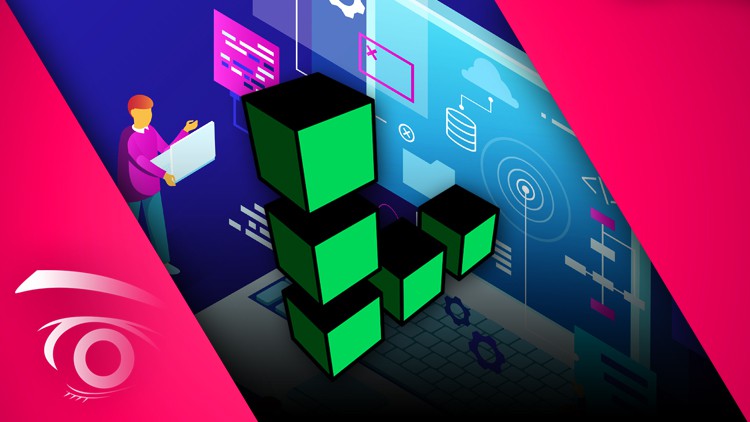
Cloud Computing | IaaS | Linux Foundations | Apache + DBMS | LAMP Stack | Server Security | Backups | HTML | CSS
What you will learn
Understand the fundamental concepts and benefits of Cloud Computing and its service models.
Learn how to create, configure, and manage virtual servers in the cloud using Linode.
Understand the basic concepts of Linux operating system, including file system structure, command-line interface, and basic Linux commands.
Learn how to manage users and permissions, configure network settings, and use package managers in Linux.
Learn about the basic concepts of web servers, including Apache and Nginx, and databases such as MySQL and MariaDB.
Learn how to install and configure web servers and databases on Linux servers.
Learn how to install and configure LAMP stack to set up a web server and database for hosting dynamic websites and web applications.
Understand server security concepts such as firewalls, access control, and SSL certificates.
Learn how to secure servers using firewalls, manage user access, and configure SSL certificates for secure communication.
Learn how to scale servers to handle increasing traffic and load.
Learn about load balancing, clustering, and auto-scaling techniques.
Learn how to create and manage server images.
Understand the basic structure and syntax of HTML, including tags, attributes, and elements.
Understand how to apply CSS styles to HTML elements, create layouts, and use CSS frameworks.
Description
This course is designed to provide students with a comprehensive understanding of Cloud Computing and its service models, as well as practical skills in deploying and managing servers on Linode, a popular cloud hosting platform. The course will also cover Linux Foundations, Web Server and Database Foundations, LAMP Stack installation and configuration, Server Scaling, Server Images and Backups, HTML Foundations, and CSS Development.
The course begins with an Introduction to Cloud Computing, covering the key concepts and benefits of cloud computing, such as elasticity, scalability, and cost efficiency. Students will learn about the different cloud service models, including Infrastructure-as-a-Service (IaaS), Platform-as-a-Service (PaaS), and Software-as-a-Service (SaaS), and their use cases.
Students will then dive into Cloud Server Deployment on Linode, where we teach how to create, configure, and manage virtual servers in the cloud using Linode. Students learn to set up a Linux server on Linode, access it remotely using SSH, and install necessary packages and tools.
The course then moves to Linux Foundations, where students will learn the fundamental concepts of the Linux operating system, including file system structure, command-line interface, and basic Linux commands. Students also learn how to manage users and permissions, configure network settings, and use package managers.
Next, the course covers Web Server and Database Foundations, where students learn the basic concepts of web servers, including Apache and Nginx, and databases such as MySQL and MariaDB. Students learn to install and configure web servers and databases on Linux servers, as well as how to use web server logs to troubleshoot issues.
Students will then learn how to install and configure LAMP stack, which includes Linux, Apache, MySQL, and PHP, to set up a web server and database for hosting dynamic websites and web applications. They will learn how to install PHP modules, configure PHP settings, and troubleshoot common issues.
The course then moves on to the Foundations of Server Security, where students learn about server security concepts such as firewalls, access control, and SSL certificates. You will also learn how to secure servers using firewalls, manage user access, and configure SSL certificates for secure communication.
Server Scaling is the next topic, where students will learn how to scale their servers to handle increasing traffic and load. Here, we explore load balancing, clustering, and auto-scaling techniques, as well as how to use monitoring tools to monitor server performance and diagnose issues.
Students will then learn about Server Images and Backups, where we create and manage server images, as well as perform regular backups to prevent data loss. We teach how to use snapshot tools and backup tools to create and restore server images.
The course then covers HTML Foundations, where students will learn the basic structure and syntax of HTML, including tags, attributes, and elements. You will learn to create HTML pages, add text and images, and create hyperlinks.
Finally, the course covers CSS Development, where students will learn about Cascading Style Sheets (CSS), which is used to style HTML pages. Students learn to apply CSS styles to HTML elements, create layouts, and use CSS frameworks.
In summary, this course provides students with a comprehensive understanding of Cloud Computing and its service models, as well as practical skills in deploying and managing servers on Linode, Linux Foundations, Web Server and Database Foundations, LAMP Stack installation and configuration, Server Scaling, Server Images and Backups, HTML Foundations, and CSS Development. Upon completion, students will have the necessary skills to set up and manage their own web servers in the cloud, and develop dynamic web applications.
Content